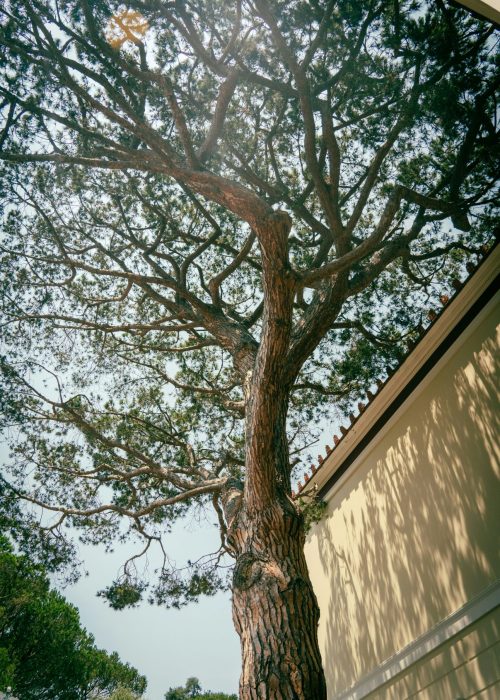Subsidence Reports
Clear, defensible assessments for tree-related structural movement — built for insurers, engineers and homeowners who need stable, evidence-based decisions.
Small cracks create big questions. Insurers request evidence, engineers need clarity, and uncertainty slows everything. A focused subsidence assessment identifies what’s happening and how to proceed without unnecessary cost.
When movement appears, you need certainty early…
Subsidence ties together soils, foundations and nearby trees.
It feels complex when viewed in isolation.
A structured assessment sets out the facts, reduces assumptions and helps you act with confidence.
What is a Subsidence Report?
A Subsidence Report evaluates whether nearby trees are influencing structural movement by assessing:
- crack patterns and structural symptoms
- moisture behaviour in shrink–swell soils
- root pathways and likelihood of root presence
- species-specific water demand
- proximity, foundation depth and loading context
- seasonal patterns of movement
The outcome is a clear conclusion: tree involvement confirmed, possible, or unlikely.
Reports are structured for acceptance by insurers, planners and engineers.

Do I need a Subsidence Report?
You may need one if you’ve noticed:
- diagonal or stepped cracking
- gaps forming at junctions or extensions
- movement that worsens in dry months
- mature trees positioned close to foundations
- driveways or patios repeatedly lifting or dipping
- queries raised by insurers, surveyors or planners
A subsidence report provides the evidence required to make safe, proportionate decisions.
Why this matters for planning:
Trees sit within planning legislation as a material consideration.
When structural movement occurs near vegetation, LPAs require reliable evidence to determine:
- whether a tree poses a genuine risk
- whether removal or retention is justified
- whether designs need adjustment
- whether conditions should be applied
Without clear information, planners may pause validation, request additional reports or require updated designs.
What your Subsidence Report includes
A clear, defensible assessment covering:
- crack pattern interpretation
- structural and site context
- species identification and moisture demand
- proximity and likely root pathways
- local soil behaviour and shrink–swell risk
- root presence indicators (where observable)
- whether tree influence is likely, possible or unlikely
- proportionate mitigation or monitoring options
Where these occur, planning applications without evidence frequently receive validation queries, requests for additional surveys or time-sensitive conditions.

Our Approach
Evidence Focused
Diagnosis grounded in structural, soil and arboricultural data.
Measured Recommendations
Actions aligned to risk, not assumption.
Planning Compatible
Evidence presented clearly for planning decisions.
The Subsidence Assessment Process
| Step | Description |
|---|---|
| 1. Initial Review | Send photographs, site details and any existing reports. |
| 2. Site Visit | Assessment of trees, soil indicators, foundations and cracking. |
| 3. Diagnosis | Tree involvement confirmed, possible or unlikely. |
| 4. Recommendations | Balanced options matched to risk level. |
| 5. Reporting | A clear, defensible report suitable for planning, insurance or engineering decisions. |
Your Next Step
Need a Subsidence Report? Share your site details and we’ll confirm the level of assessment required.
Phone: 0800 494 7479
Email: [email protected]
Case Note
A mature beech stood roughly 5 metres away, and the insurer queried potential tree involvement.
Crack patterns were inconsistent with moisture-driven movement, and soil indicators pointed toward a drainage issue.
Root influence was assessed as low-likelihood. Repairs focused on drainage correction, the tree was retained, and the homeowner avoided unnecessary structural works.
Subsidence Survey FAQs
Do all cracks indicate subsidence?
No. Many relate to thermal change, drainage issues or minor settlement. Assessment clarifies the cause.
Can trees trigger subsidence on all soil types?
Only certain soils, particularly shrink–swell clays, are susceptible.
Is tree removal always required?
Not necessarily. Many cases resolve through drainage improvements or monitoring.
Can this delay planning?
It may, if structural risk is unclear. Clear evidence avoids repeated queries.
Will the report be accepted by insurers?
Yes. The structure and methodology follow recognised insurer expectations.
Do I also need a structural engineer?
For complex cases, both inputs may be useful. Assessment will advise accordingly.
Are root barriers effective?
In some settings, yes, but they must be proportionate and correctly designed.
Will underpinning stop movement?
Underpinning stabilises foundations, but it must be recommended for the right cause.
Can monitoring replace immediate action?
Often. Seasonal monitoring clarifies patterns and reduces unnecessary intervention.
What information helps you assess the problem faster?
Photos of cracks, the site address, tree species and any guidance from insurance or surveyors.



